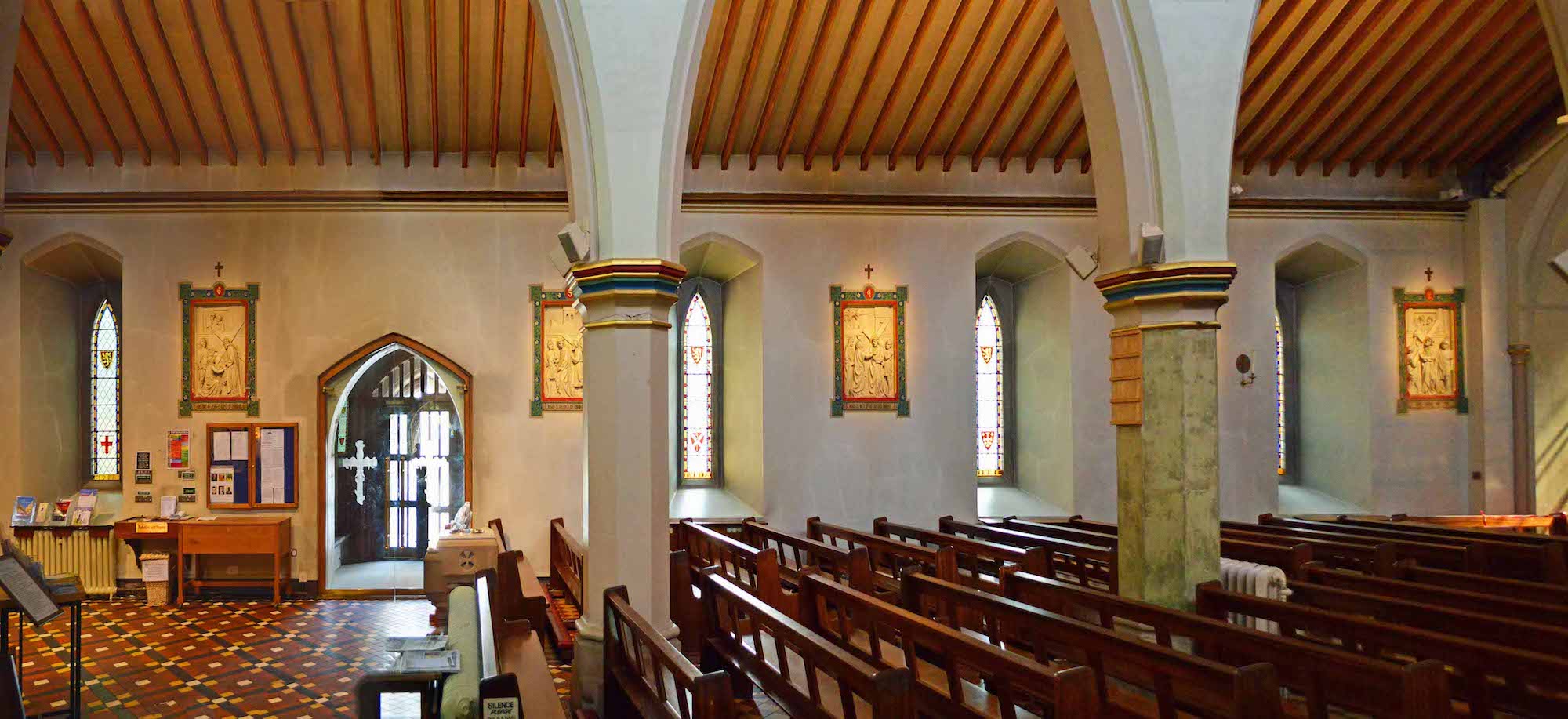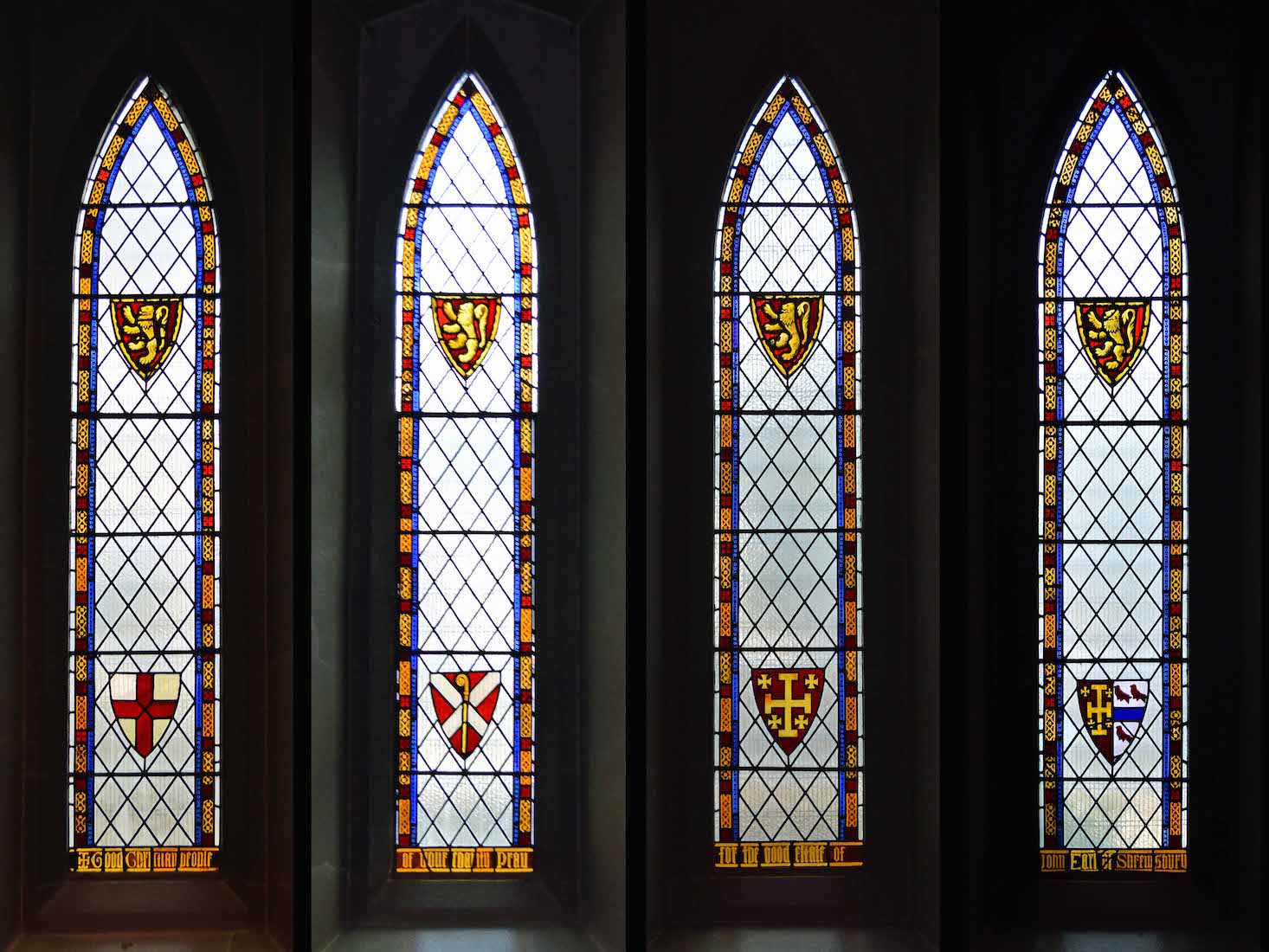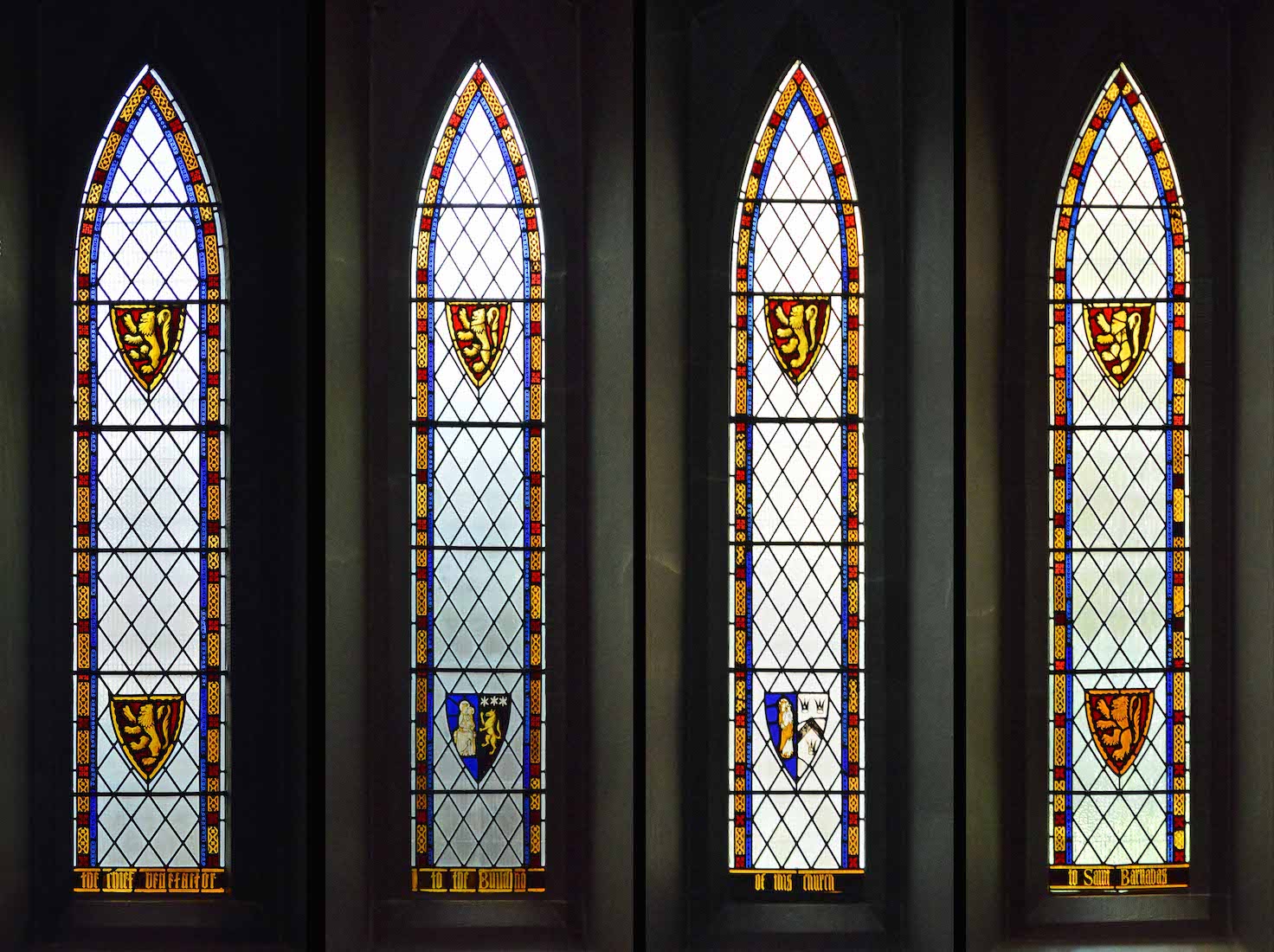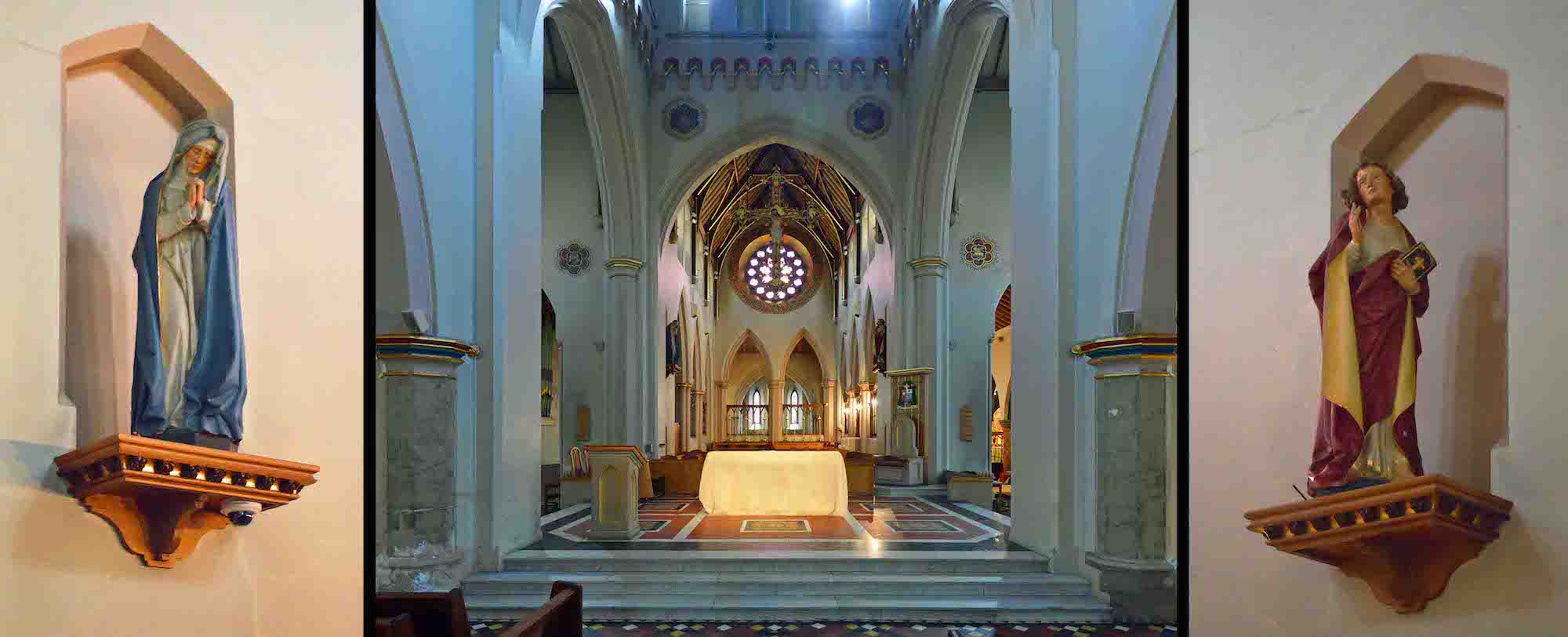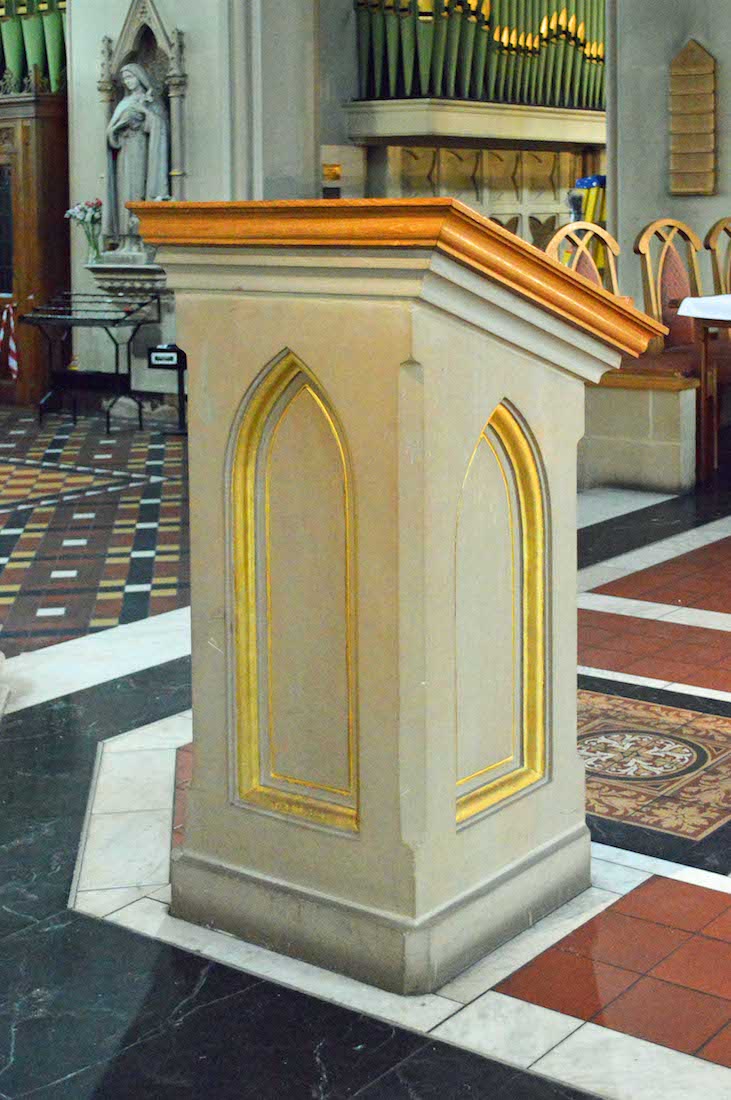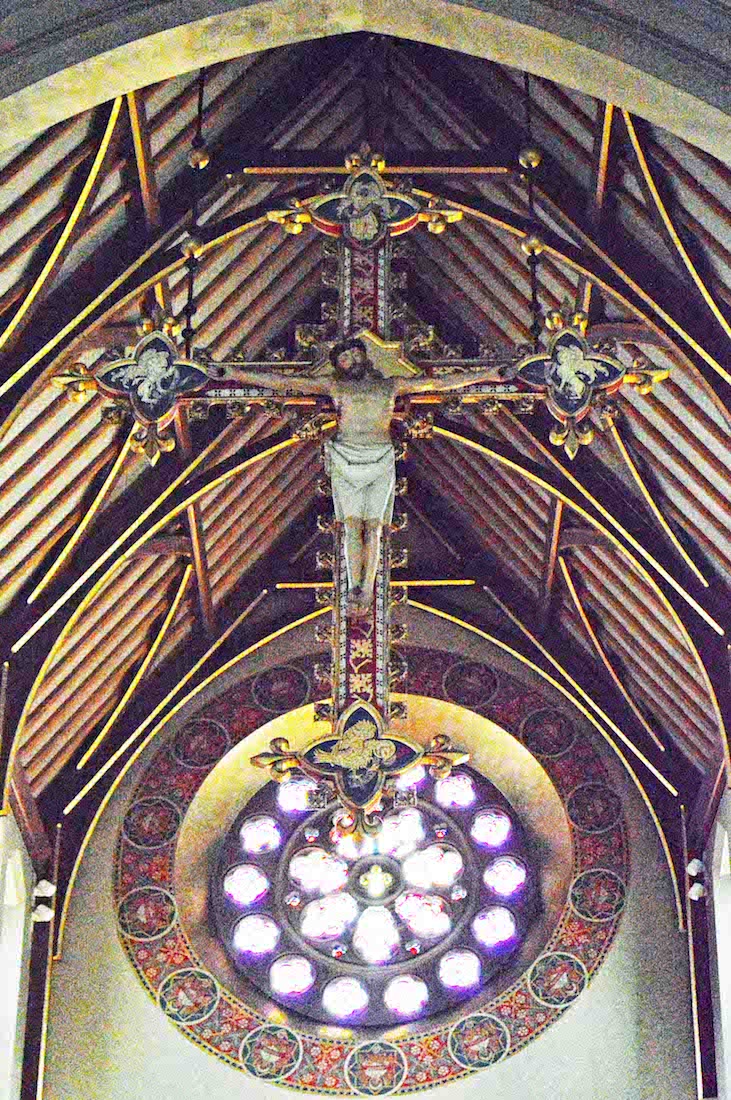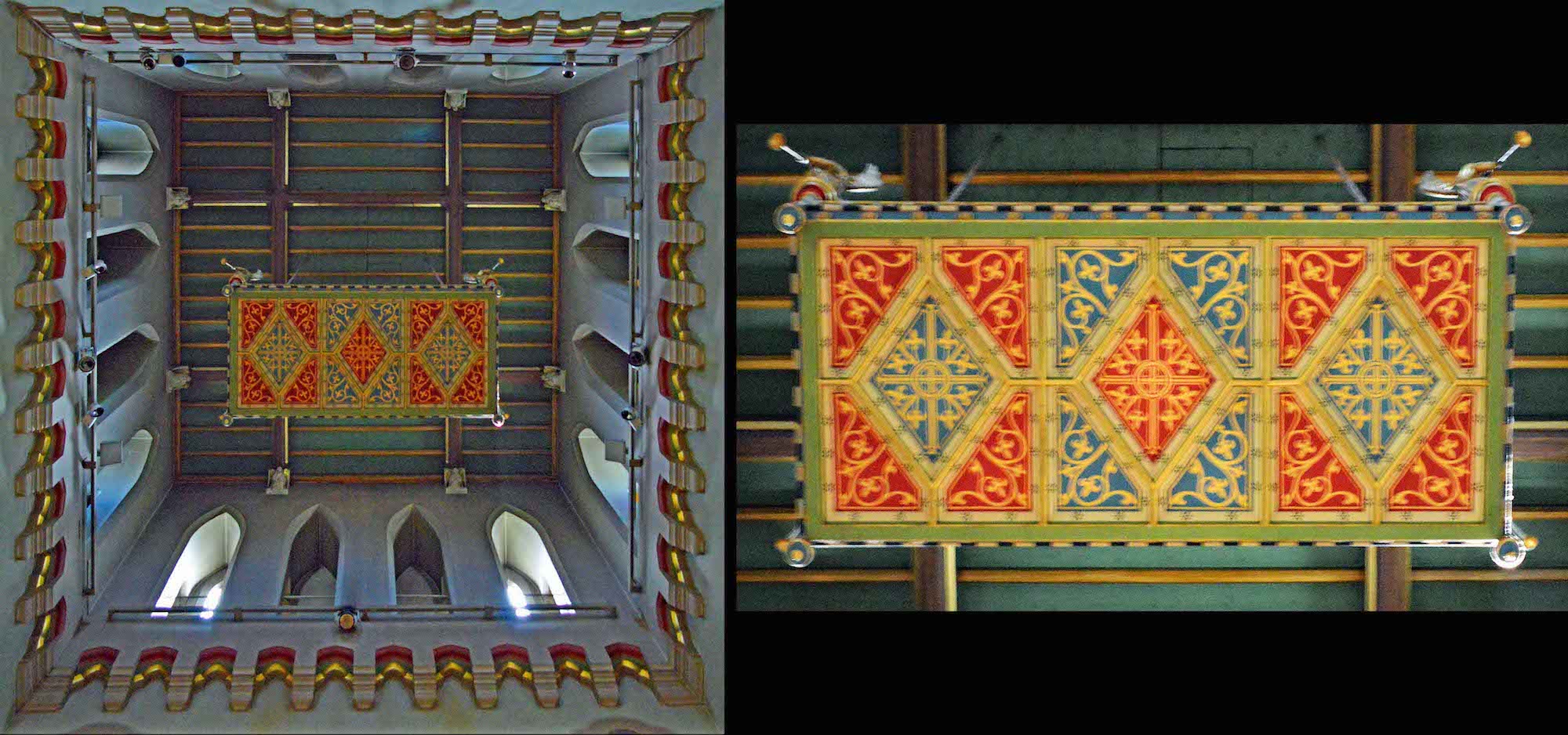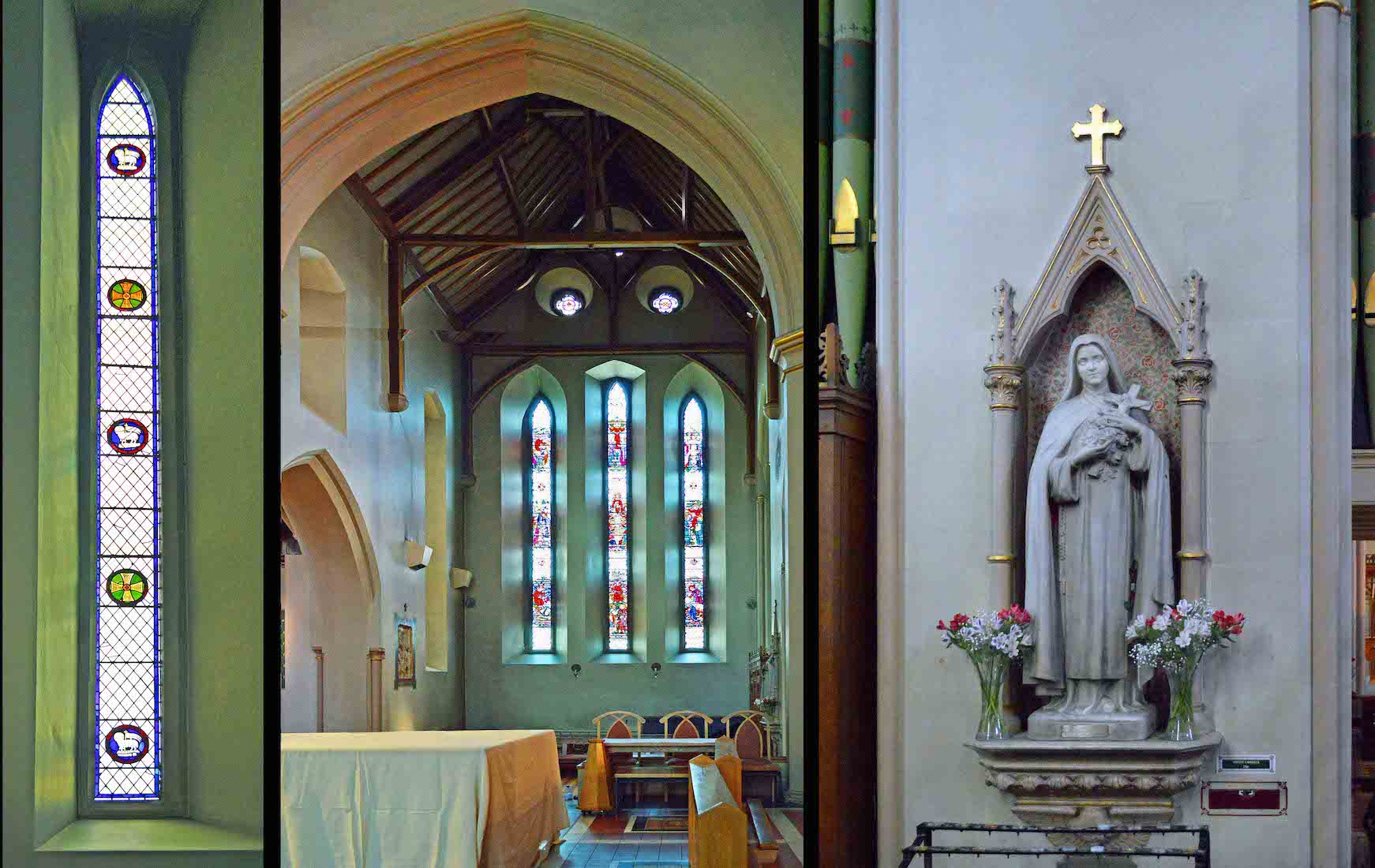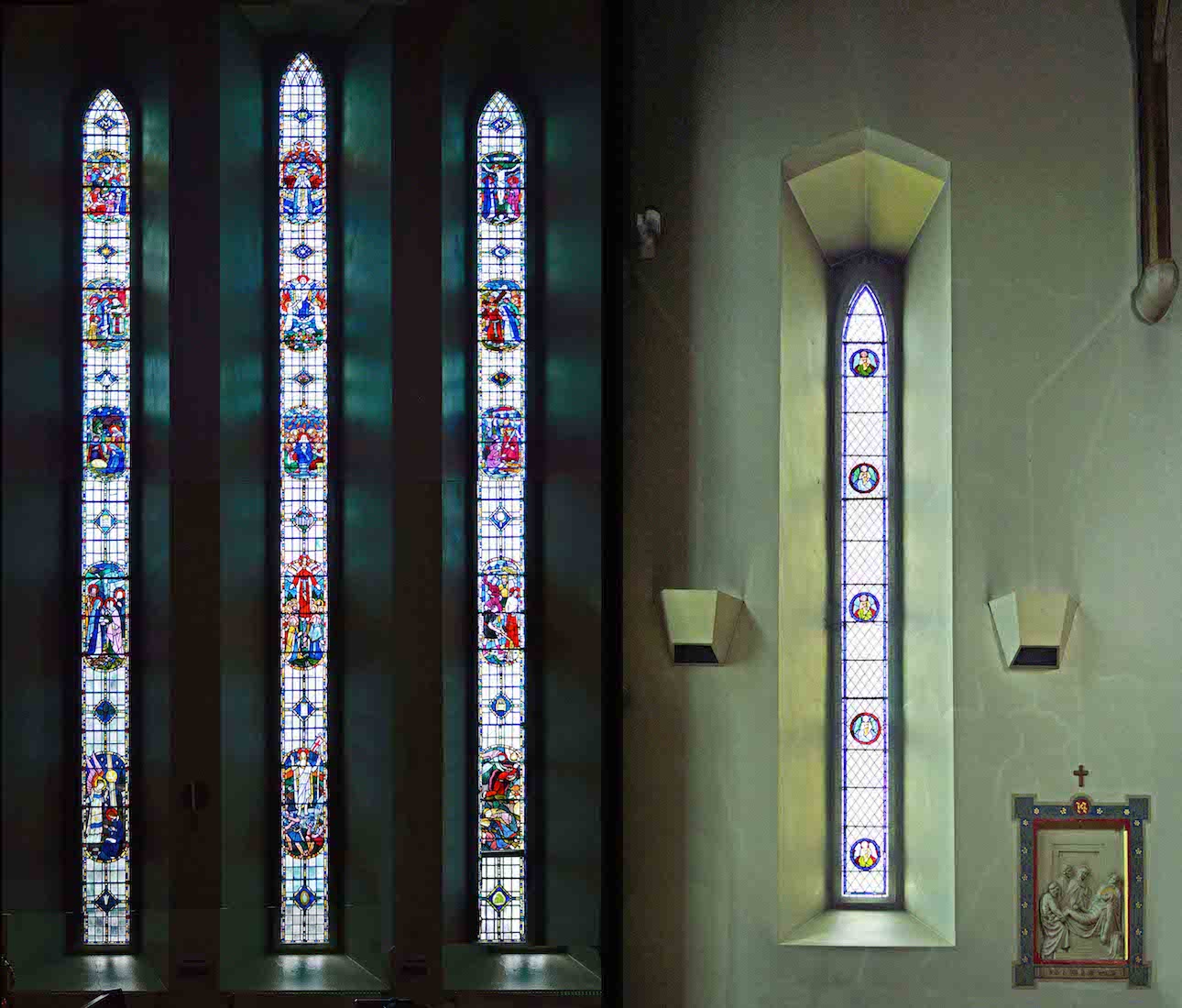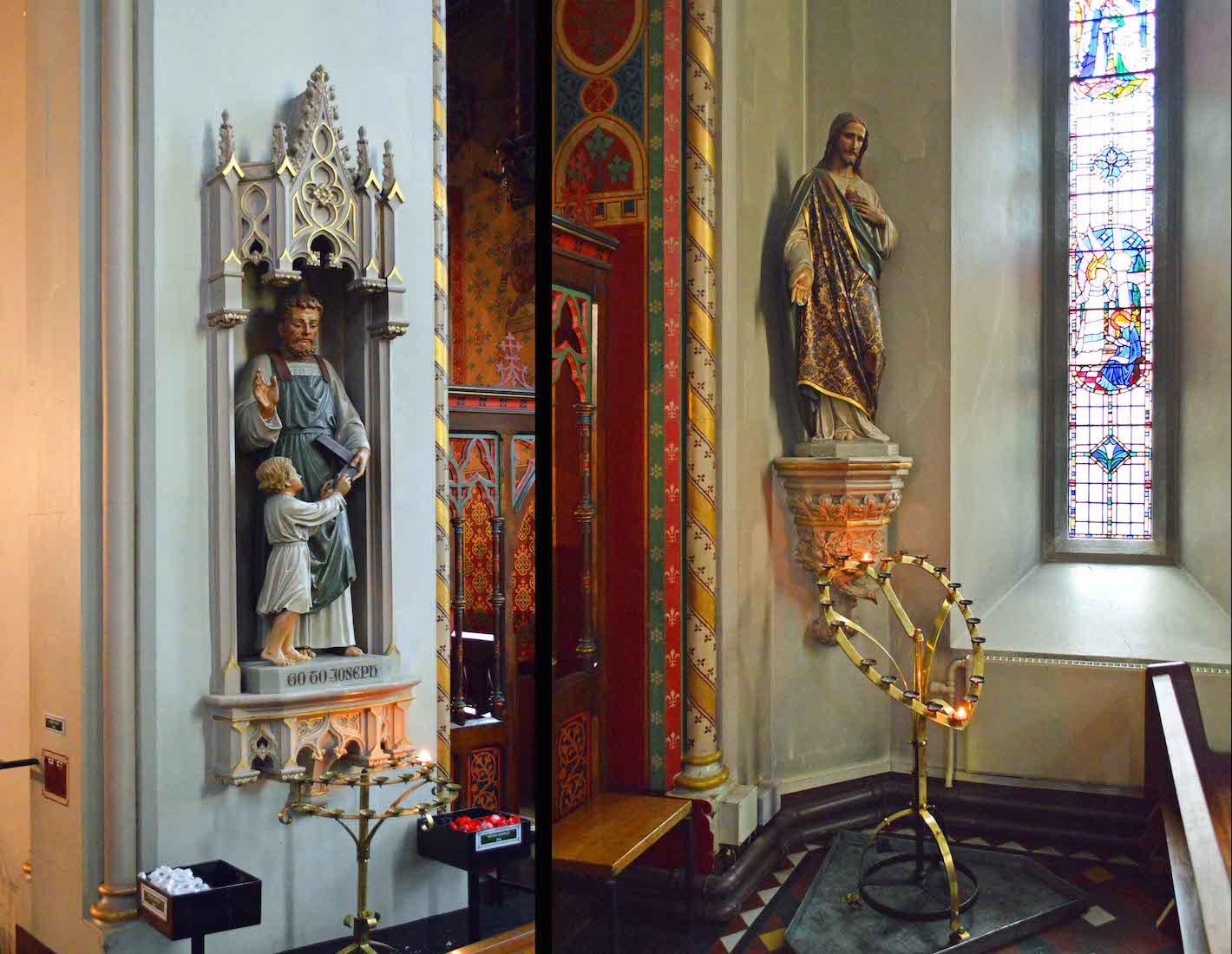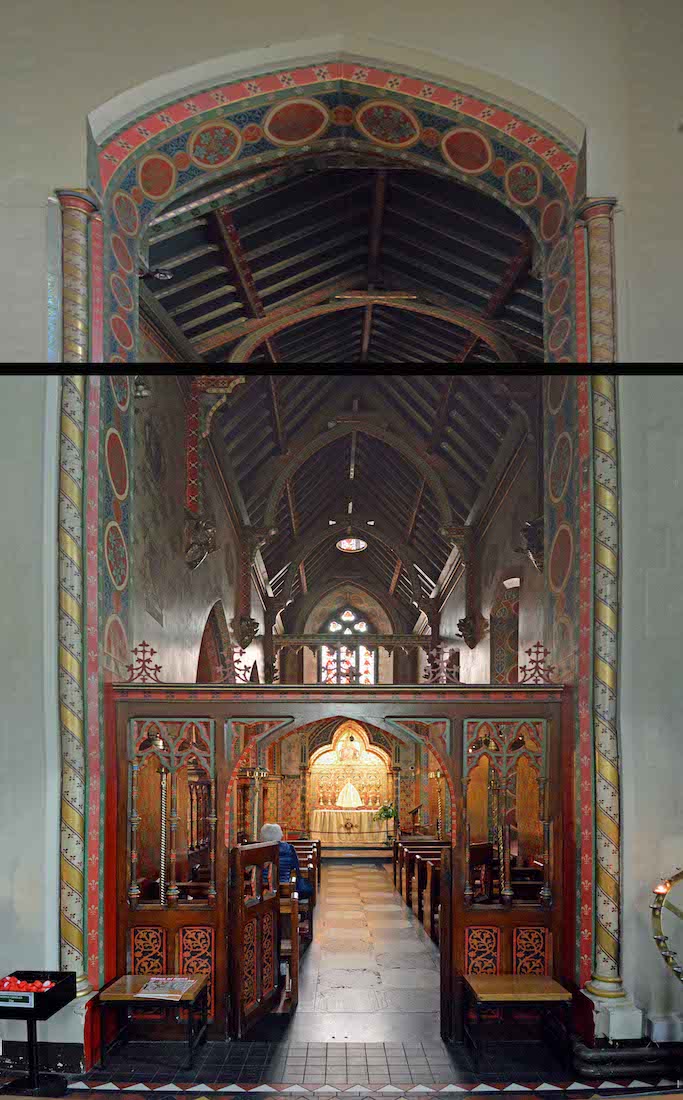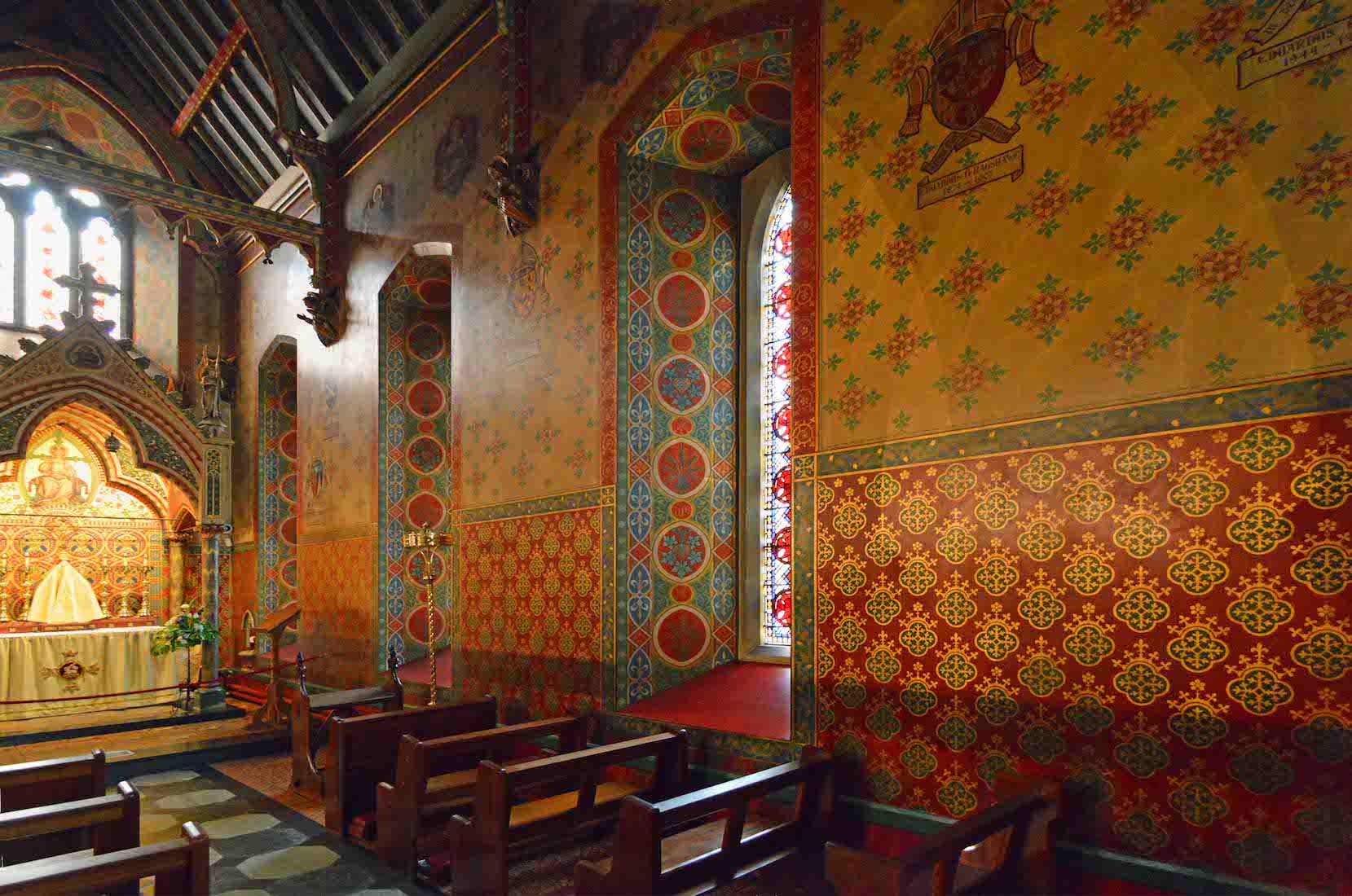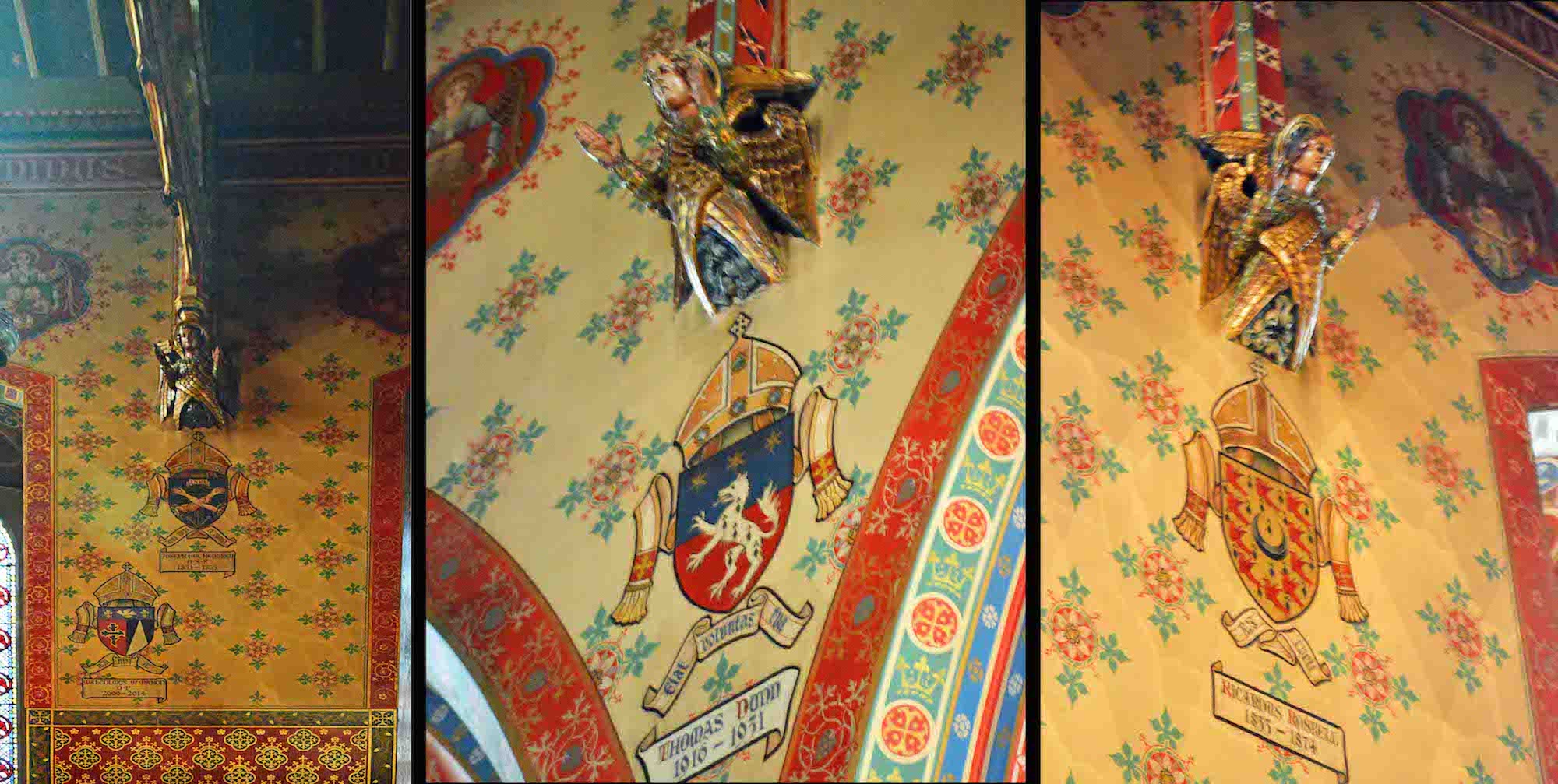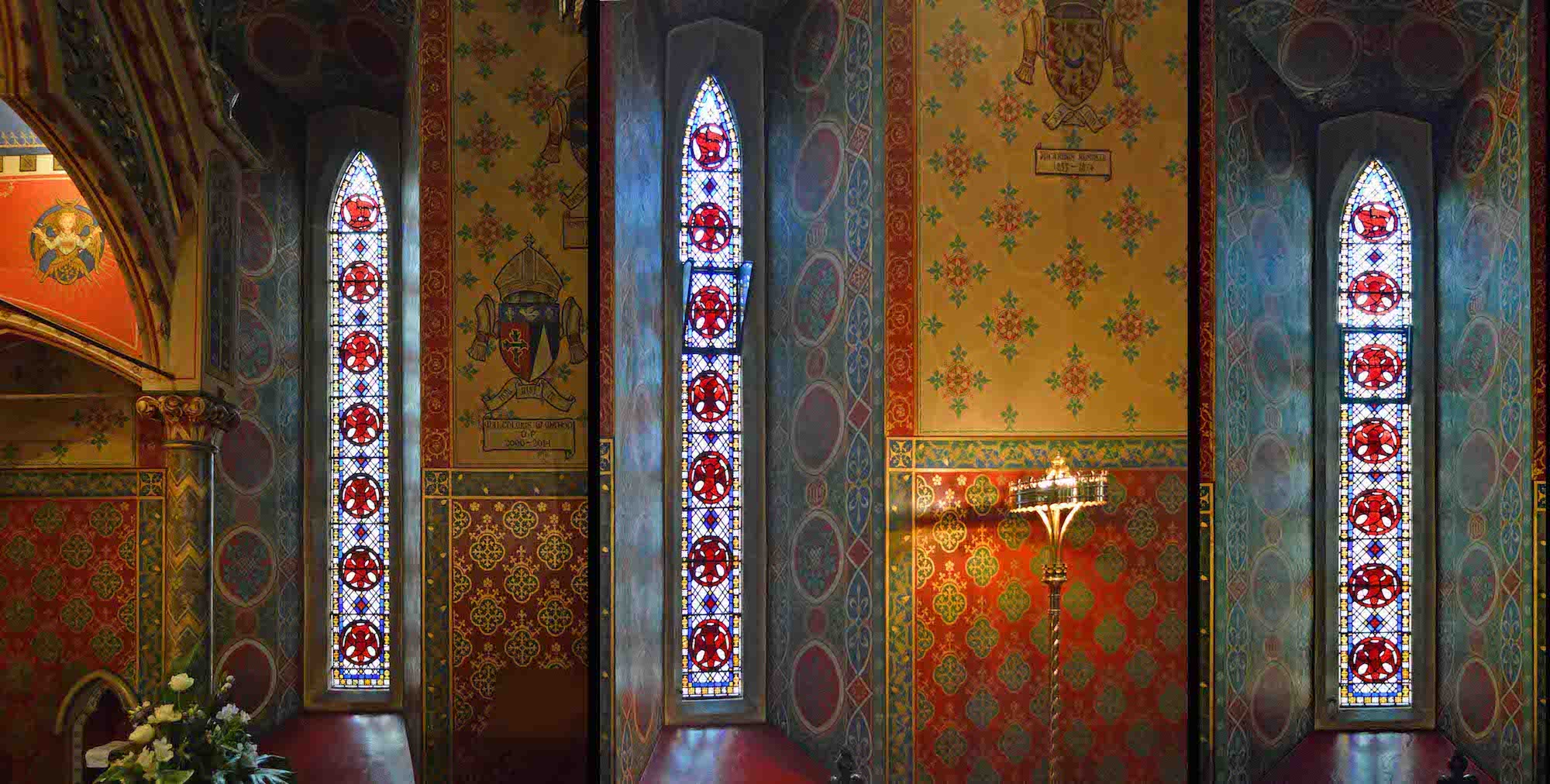21. SOUTH CLERESTORY WINDOWS AND ROUNDELS
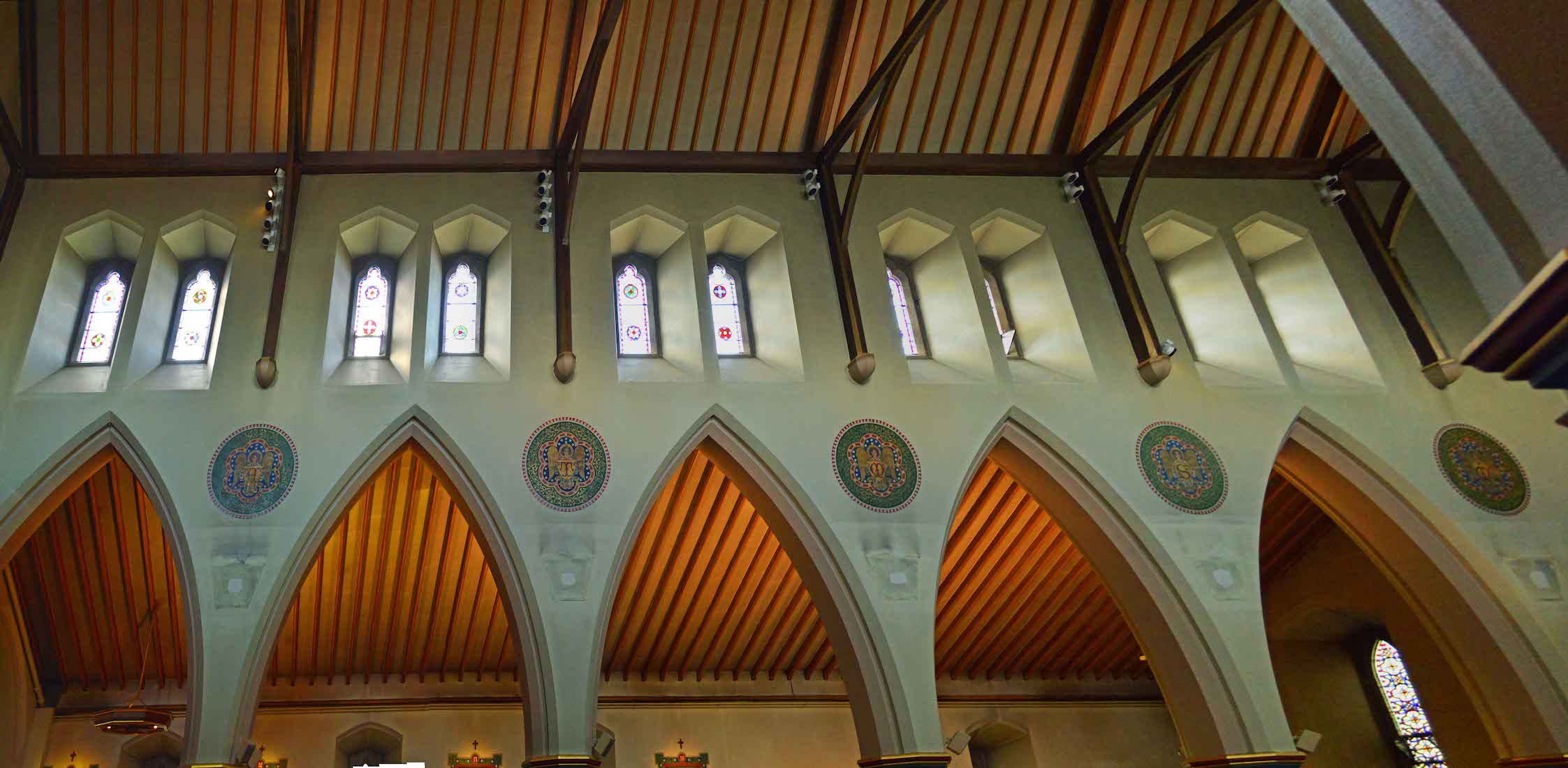
The arrangement of clerestory windows and roundels on the South side of the Cathedral is the same as that on the North side. PLAN
22. SOUTH CLERESTORY WINDOWS
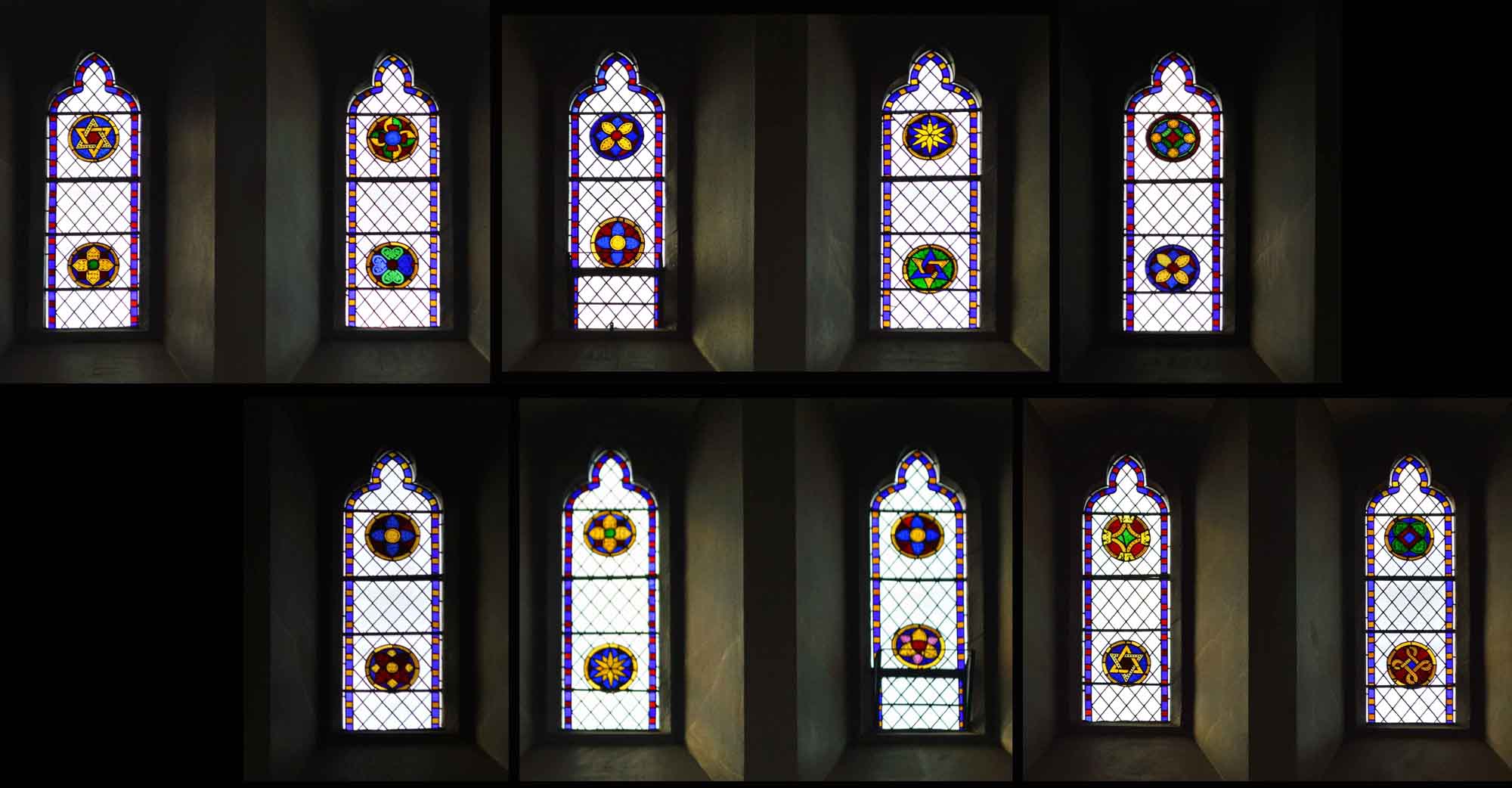
It is unclear whether the roundels are chosen for some particular reason, or whether they are purely decorative.
23. NORTH NAVE WALL
We lower our eyes and turn next to the North nave wall. The layout is very simple here with stations of the cross alternating with stained glass windows (and the North porch). To the left of the doorway is a clutter of books and notices – as found in any church!
24. NORTH NAVE WINDOWS
The nave windows are something of a mystery. Each window has two symbolic crests. At top of each window (and in fact all eight nave windows) is a gryphon, suggesting Wales. Then the North windows from left show the English cross, the Scottish diagonal cross, a variation of the Jerusalem cross, and a crest made up of two parts, one being the Jerusalem cross.
25. SOUTH NAVE WALL
The South nave wall has a similar simple layout, although we notice here the baptismal font at left.
26. SOUTH NAVE WINDOWS
The gryphon symbol is even more evident in the South nave windows. The lower crests in the central windows are both compound, with one half showing the Madonna and Child.
27. SANCTUARY
As we face the sanctuary area, the crossing is immediately before us. The altar is covered – unfortunately there were workmen in the area at the time of my visit. We also notice the lectern or ambo at left and the cathedra at right. Above is the rose window. In front of this is a crucifix – in association with the painted statues of the Virgin Mary and St John making up the Rood Cross.
28. AMBO
Catholic churches and cathedrals often have an ambo. This serves two purposes. The first is as a lectern from where the Scripture is read. The second is as a pulpit from where the gospel is proclaimed.
29. CATHEDRA
On the other side of the altar is the Bishop’s throne or cathedra. It is from this Latin name that this church takes the title of ‘Cathedral’. The coat of arms has the text ‘Quaerite Christi Vultum’ which means ‘Seek the face of Christ’. It is the coat of arms of Patrick Joseph McKinney, who is the 10th Bishop of Nottingham.
30. ROOD CROSS
The crucifix which forms part of the rood cross setting is interesting because of the figures at the extremities of the cross. They are the symbols for the Four Evangelists: an angel (Matthew), a lion (Mark), an ox (Luke), and an eagle (John).
31. CROSSING CEILING
The crossing and altar lie directly beneath the tower. High in this space is a richly decorated canopy or tester, hanging over the altar. Such testers were originally designed to be sounding boards, but the effectiveness of this one is uncertain.
32. BAPTISMAL FONT
The octagonal baptismal font standing on its large octagonal platform is in the Southeast corner of the nave. Baptism is regarded as the rite of entry into the Church and into the community of Christians.
33. NORTH TRANSEPT
The North transept has a tall lancet window in the West wall. The main North window has stained glass by Joseph Edward Nuttgens (1892-1982). Against the East wall is a statue of St Theresa of Lisieux in white marble and set in a bower of roses. The painted organ pipes are visible here too.
35. ENTRY TO BLESSED SACRAMENT CHAPEL
From the South transept we can enter the Blessed Sacrament Chapel. The entry is flanked by a statue of the Sacred Heart and a very attractive statue of St Joseph and the Boy Jesus.
36. BLESSED SACRAMENT CHAPEL
The Blessed Sacrament Chapel is a perfect example of Gothic Revival decoration. It is considered by many to be the 'jewel in the crown' of St. Barnabas Cathedral. It is richly decorated as Pugin had originally intended and is the very heart of the Cathedral. In addition to being used for private prayer, the Chapel is also the centrepiece for more organised group prayer, such as that for Vocations on a Saturday morning.
37. CHAPEL SOUTH WALL
In contrast to the Cathedral nave, the walls of the Blessed Sacrament Chapel are extravagantly ornate.
38. SOUTH WALL DETAIL
Amongst other things, the decoration of the Chapel includes the names, dates and crests of all the past Bishops of Nottingham Cathedral since the establishment of the diocese in 1850.
39. CHAPEL WINDOWS
Light for the Chapel comes from identical windows in the South wall, windows with a simple repeating pattern.
40. BLESSED SACRAMENT CHAPEL ALTAR
Approaching the altar in the Blessed Sacrament chapel almost overwhelms the senses! Pugin’s eye was always caught by rich fabrics and papers, and he made full use of them.


